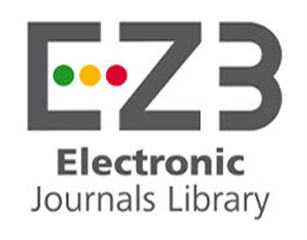PECULIARITIES OF FUNCTIONING OF ADMINISTRATIVE AGENCIES IN THE PUBLIC SERVICE OF SWEDEN
Keywords:
public service, government services, administrative Agency, The Council of the Agency, the heads of departments, officialsAbstract
The article gives a General analysis of the public administration system of Sweden, which later received the name “the Swedish model”. A characteristic feature of this model is the combination of the corresponding control system, steady economic growth, political stability, high level of social protection and a decent level of welfare of the society. An important role in building such a model and played the public service, which refers to open, so is a mobile, simplified, and accordingly has the democratic nature of functioning. The Constitution establishes the General criteria of access to public service, which are somewhat minimized, but the list of criteria was expanded by the Act public service preferred skills and experience when recruiting staff.
The article notes that the specific feature of the Swedish system is its dualism, which is associated with the so-called “Ministerial rule, which prevents members of the Government to intervene in current cases of administrative agencies”. Such administrative agencies are sufficiently independent entities, vested with broad rights and freedoms and give government agencies the proposals within the appropriate course. Each Central Agency is accountable to a particular Ministry. This situation is a consequence of the norms of collegiality in making decisions.
It’s noted that in the framework of the Central public administration system, the Government delegates most of the responsibilities for managing public sector employment directly to agencies, each of which manages its employees, except heads of agencies who are appointed by the Government (diplomats, police, armed forces).
A characteristic feature of the public service of Sweden is the lack of official organization for civil servants holding the highest positions within which it is possible to allocate two groups of “senior” government officials: first, a group of Executive staff at agencies (Directors, governors, and County heads of government departments) and the second group of state secretaries and General Directors.
References
Government Offices of Sweden. 2009. The Government Offices Yearbook 2008. Västerås: Edita. VästraAros. — 112 р.
Larsson T. 2002. Sweden. In Distributed Public Governance: Agencies, Authorities and other Government Bodies, edited by OECD: OECD Publishing. — 45 р.
Kingdom of Sweden.Piblic Administration Country Profile. April 2006 / [Electronic resourse]. — Electronic data. — [Division for Public Administration and Development Management (DPADM), Department of Economic and Social Affairs (DESA) United Nations ]. — Mode of access: http://unpan1.un.org/intradoc/groups/public/documents/un/unpan023323.pdf (viewed on November 26, 2016)
OECD. 2008. Employment in Government in the Perspective of the Production Costs of Goods and Services in the Public Domain. OECD. — 218 р.
Paul T. Levin. The Swedish Model of Public Administration: Separation of Powers — The Swedish Style / Paul T. Levin. — JOAAG, Vol. 4. № 1. — P. 38–46.
Public employment — Sweden September 2016 [Electronic resourse]. — Electronic data. — [Eurostat. Statistics Explained]. — Mode of access: http://ec.europa.eu/eurostat/statistics- explained/index.php/Public_employment_-_Sweden. (viewed on November 26, 2016)
Адміністративне право України: підручник / [Ю. П. Битяк, В. М. Га- ращук, О. В. Дьяченко та ін.]; за ред. Ю. П. Битяка. — К.: Юрінком Інтер, 2007. — 544 с.
“Шведська модель”: Стислий огляд становлення, здобутків і проблем. — [Електронний ресурс]. — Режим до- ступу: http://www.razumkov.org.ua/ukr/files/category_journal/NSD105_ukr_4.pdf











